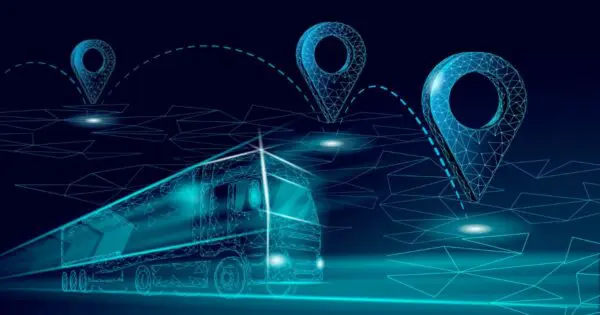For businesses that rely on people and vehicles working in the field, keeping operations running smoothly means more than just getting jobs done. It’s about how effectively, safely, and reliably they’re done – and whether your team has the visibility and tools to make improvements where it matters.
Tracking the right performance metrics can make all the difference, but many organisations still rely on spreadsheets, assumptions, or incomplete data to guide decision-making. That’s a problem – because without clear, real-time insight, small issues can snowball into much bigger ones.
Let’s look at the KPIs that actually help field operations run more efficiently – and why they matter.
First-time fix rate: the foundation of customer trust
When a technician needs to return to the same job more than once, it doesn’t just waste time. It increases fuel usage, ties up scheduling, frustrates customers, and puts additional strain on your teams.
First-time fix rate (FTFR) measures how often a job is completed successfully on the first visit. In the UK, the average FTFR across field service sectors is just over 75%, but top-performing organisations aim for closer to 90%. A low FTFR might point to gaps in training, unclear job scoping, or a lack of the right tools or parts — all solvable issues when the data is visible.
By monitoring and improving FTFR, businesses can cut costs, reduce repeat journeys, and build better customer relationships.
Job completion time: the reality behind the schedule
How long should a job take? The answer can vary — but if actual job times are regularly overshooting expectations, you may have a planning or resource issue.
Tracking completion time helps identify where delays are happening and why. It could be due to travel inefficiencies, incomplete job data, or simply unrealistic expectations. Whatever the cause, having visibility into this KPI allows you to make more informed decisions around job allocation, training, or process improvements.
It also helps protect your teams from burnout by ensuring workloads are manageable and fair across the board.
Vehicle utilisation: are your assets working as hard as your people?
Every vehicle in your fleet has a cost. But not every vehicle is used equally — and underutilisation is more common than many businesses realise.
According to a 2023 UK fleet efficiency survey, around 22% of light commercial vehicles are underused by more than 30% each week. That’s a significant drain on resources. Tracking vehicle utilisation can highlight where vehicles are being overworked or underused, helping you optimise routes, redistribute work, or even reduce fleet size without compromising service.
Smart telematics solutions like Geotab can show you usage trends over time and help make data-backed decisions about purchasing, leasing, or reallocation.
Driver behaviour: safety, efficiency and reputation
When your brand is visible on the road, driving standards matter. Harsh braking, speeding, sharp cornering, or long idling periods impact fuel efficiency, vehicle wear, and public perception.
Monitoring driver behaviour through telematics or AI-powered cameras helps to identify high-risk habits, providing opportunities for driver coaching. It’s also key for reducing operational costs and maintaining compliance with road safety regulations.
Fleet operators using driver monitoring systems often report a 10–20% drop in fuel costs and a significant reduction in collision rates. This, in turn, positively impacts insurance by not only reducing accidents and their associated costs but also by demonstrating to insurance companies that proactive steps are being taken to mitigate risks.
To foster a culture of continuous improvement and engagement, many organisations are turning to gamification – we’ll talk more about this in a minute.
Customer satisfaction: a KPI you can’t afford to ignore
Field-based teams are often the only in-person contact a customer has with your business. Even if the technical work is done perfectly, poor communication or delays can lead to negative experiences — and lost business.
Simple measures like estimated delivery times, proof of delivery/job completion, post-job surveys or net promoter scores (NPS) can offer valuable insight into how your customers perceive your service. This feedback becomes especially powerful when cross-referenced with other KPIs to create a fuller picture of performance.
Employee engagement: driving performance through gamification
Employee engagement is pivotal in field operations. Engaged employees are more likely to exhibit higher productivity, better customer service, and increased loyalty. One effective strategy to enhance engagement is through gamification.
Gamification involves applying game-design elements in non-game contexts to motivate and increase user engagement. In the context of field services, this could mean implementing leaderboards that rank technicians based on key performance indicators (KPIs) such as job completion time, customer satisfaction scores, or adherence to safety protocols.
Recognising top performers with rewards or public acknowledgment can foster a sense of achievement and motivate others to improve.
Turning insights into action
Data is an extremely useful for all businesses, but only if you do something with it. The businesses seeing the most benefit from performance tracking are those using connected tools to turn raw numbers into clear insights.
This could mean:
- Coaching drivers based on real driving events, not assumptions
- Adjusting shift patterns or territories based on vehicle and job usage
- Identifying team members who need additional support or training
- Flagging recurring issues that lead to multiple visits or delays
With the right system in place, these insights can be delivered automatically — with real-time alerts, regular performance dashboards, and tailored reports for different departments.
How smarter data improves your bottom line
Tracking the right KPIs isn’t just about ticking boxes — it’s about transforming the way you work.
Better visibility leads to:
- Lower fuel and maintenance costs
- Reduced risk of incidents or breakdowns of vehicles or machinery
- Improved scheduling and planning
- Higher customer satisfaction
- Stronger team performance and morale
Ultimately, it helps your business stay competitive in an environment where customer expectations are rising and inefficiencies can quickly eat into profits.
Where to start
If you’re not already tracking these KPIs, the good news is it’s easier than ever to get started.
Modern fleet and field service technologies — including telematics, smart cameras, and workforce management platforms — can automate much of this process, integrating seamlessly with your existing systems.
The key is to focus on the metrics that matter most to your business goals. Don’t just collect data — use it to ask better questions and make smarter decisions.
Contact us today to discover how our data-backed insights can drive meaningful change in your operations.









